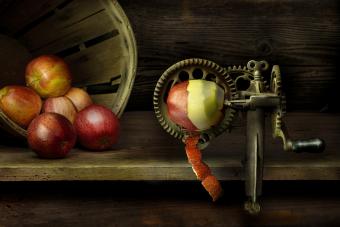Antique Stained Glass’ Colorful Legacy

Beams of light are transformed into the arrestingly bold hues of pinks, yellows, blues, greens, and so many other colors when they travel through the carefully planned glasswork mosaics of antique stained glass windows. Antique stained glass features most prominently in religious institutions. For example, stained glass work like this photo of the stained glass windows in the French Cathedral Saint-Gatien continues to mesmerize crowds of admiring onlookers every year. Take a look at this artistic medium's historic legacy, see how stained glass started, and discover the ways that it's evolved.
Gothic Architecture and Stained Glass

Stained glass first appeared in abundance during the Medieval period, particularly across central and western Europe, as artisans began distancing themselves from the cloistered Romanesque Style by experimenting with adding light into their architecture. Considering that religious buildings were both culturally sacred and important community centers, like this Notre-Dame de Chartres cathedral, the best talent an area could offer would work on these buildings, resulting in impressive mosaic panels depicting religious and secular scenes.
Features of Gothic Stained Glass Windows

The two most common types of Gothic stained glass that were created during the Medieval period were spear-shaped lancet windows and circular rose windows. Several French cathedrals are well-known for their stained glass windows; perhaps most famously is the 13th Century Notre-Dame de Paris and its beautiful rose windows. Notre-Dame de Reims rose window, which you can see here, exemplifies the same sense of delicate craftsmanship.
Stained Glass Returns in the Victorian Period

Although architectural design shifted during the next few centuries and stained glass continued to be used in official capacities, it wasn't until the late-19th century that there was a resurgence in interest in the stained glass arts. Following the macabre sentiments of the era, there was a Gothic Revival and artisans began recreating the pot-metal glass (a historic technique which mixes metal oxides and molten glass in a large pot) that was used during the Medieval Period. These pieces were just as richly colored as their earlier counterparts were and inspired a widespread desire for having stained glass in the home, and as you see in this 19th century panel from the Gethsemane Episcopal Church.
Domestic Stained Glass in the Victorian Period

Despite its Gothic inspiration, many pieces of Victorian stained glass have their own distinctive look. This comes from the use of 'slag glass' a new glassmaking technique that E.S. Prior developed which describes a type of opaque pressed glass that isn't uniformly one color or tone. Whether it was Gothic-inspired or slag glass, Victorians wanted stained glass in their homes, and houses were built with stained window accents in their entryways and along all of their window, such as how this window was for the Henry G. Marquand House.
Louis Comfort Tiffany and 20th Century Stained Glass

Tiffany & Co.'s creator's son, Louis Comfort Tiffany, was a renowned artist and artistic visionary of the late-19th and early 20th centuries. Under his leadership, Tiffany Studios created innumerable works of art, some of which, such as the infamous Tiffany lamps, are still highly collected today. Fewer people know Tiffany for his contribution to churches and organizations across the United States by making them custom ecclesiastical stained glass pieces. For instance, this stained glass was made by Tiffany for the First Baptist Church in Selma, Alabama. It was at this time that stained glass began to wane in the public opinion, and as the sleek lines, geometric shapes, and chromed futurism of the Art Deco period arose, the desire for stained glass faded away.
Sign up for our newsletter featuring all the latest stories and products we love.
Antique Stained Glass Stuns to This Day

Antique stained glass continues to stun those who get the change to look upon it, like this Tiffany piece entitled "The Flight of Souls," which won first place in the 1900 Exposition Universelle. It offers a unique glimpse into the lives of the past, whilst connecting those who're looking at it with the generations of people who've stood there and looked at it long before them.







